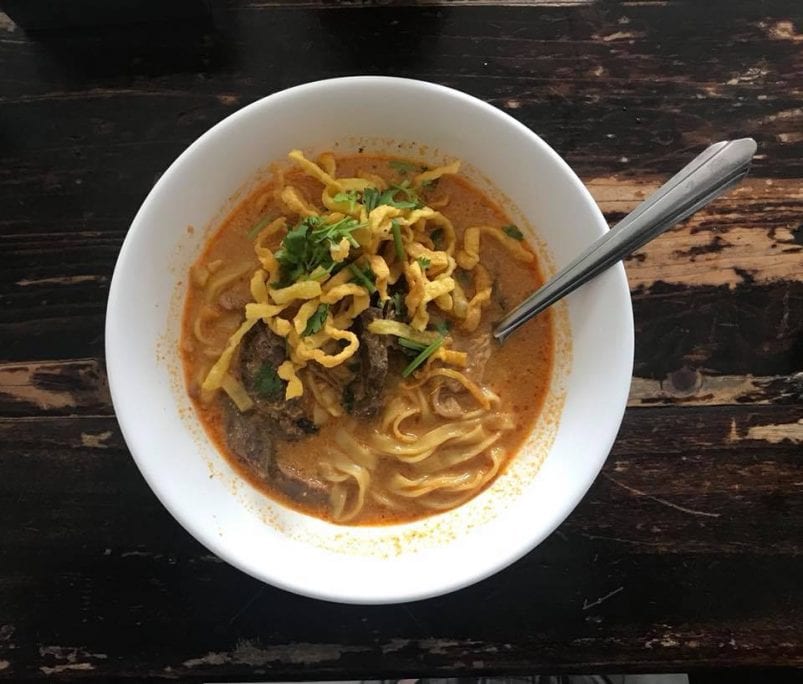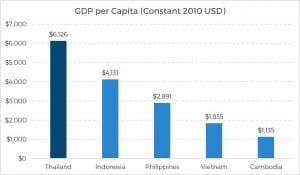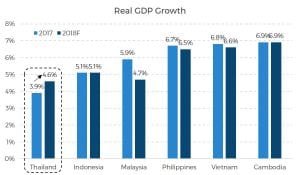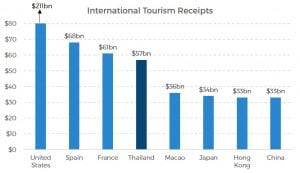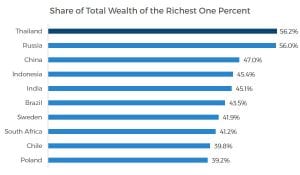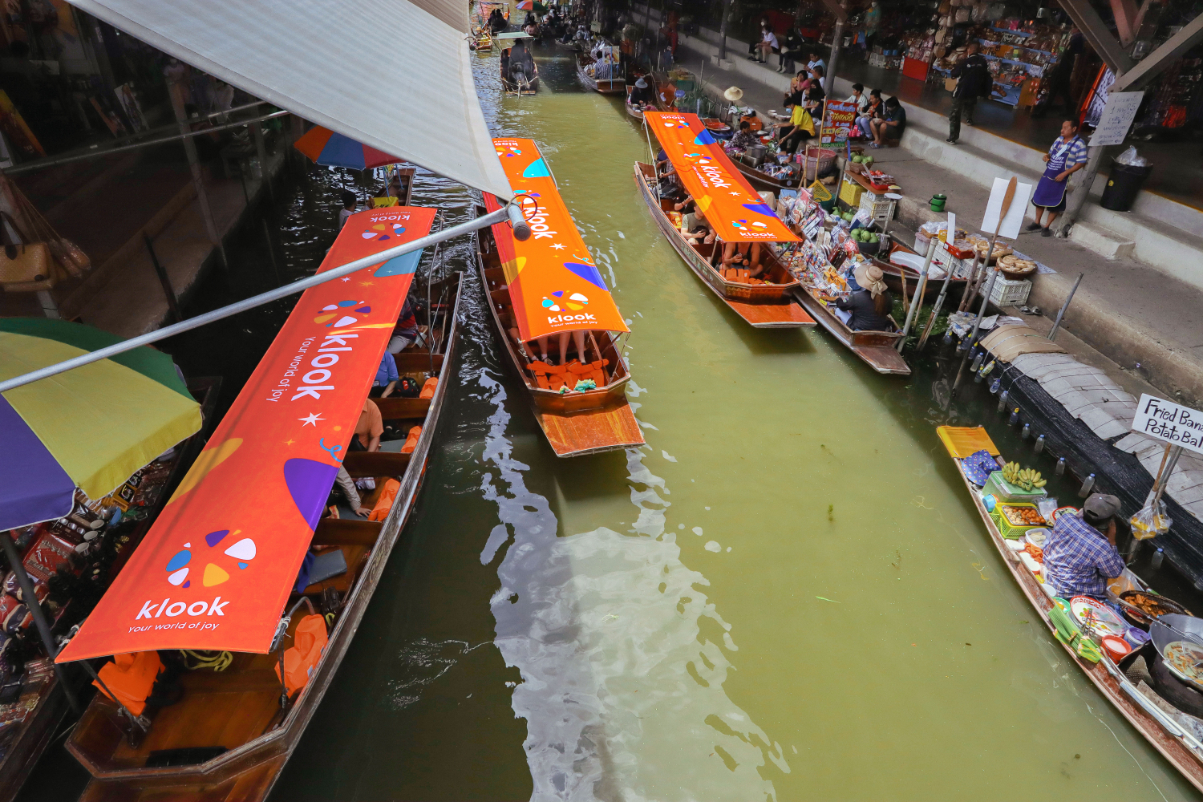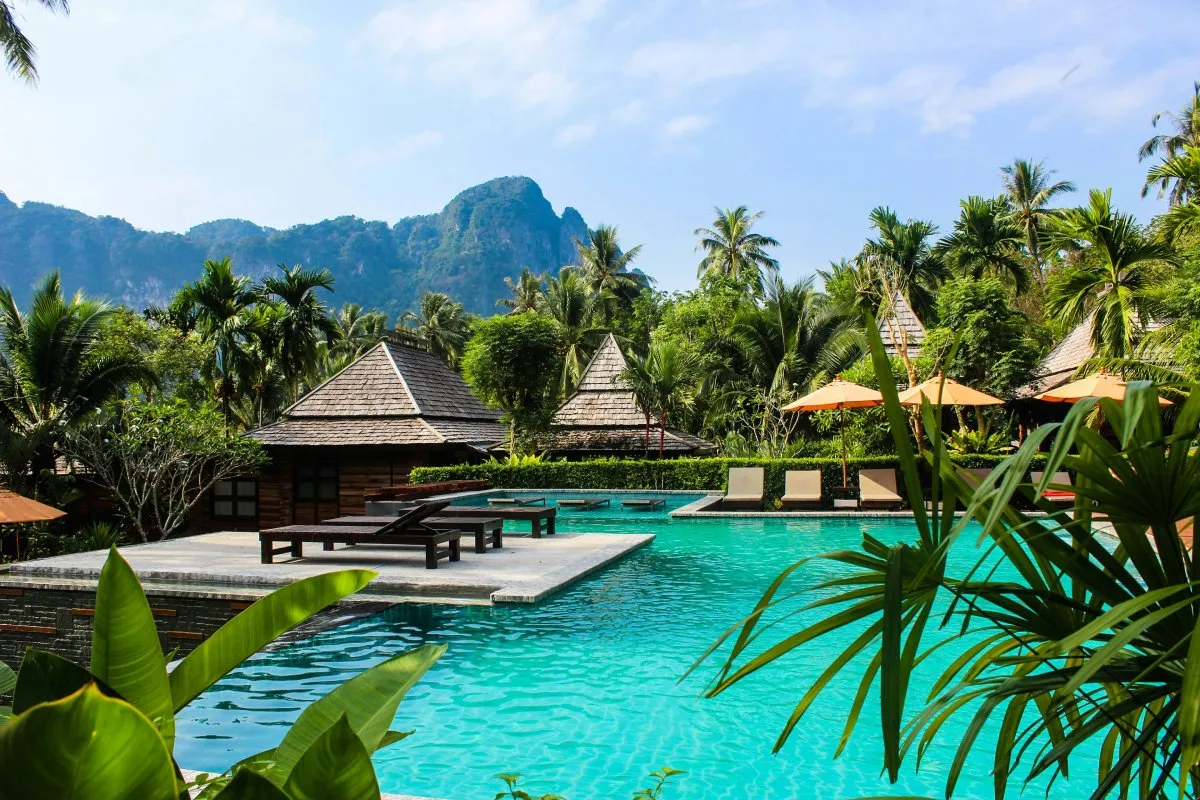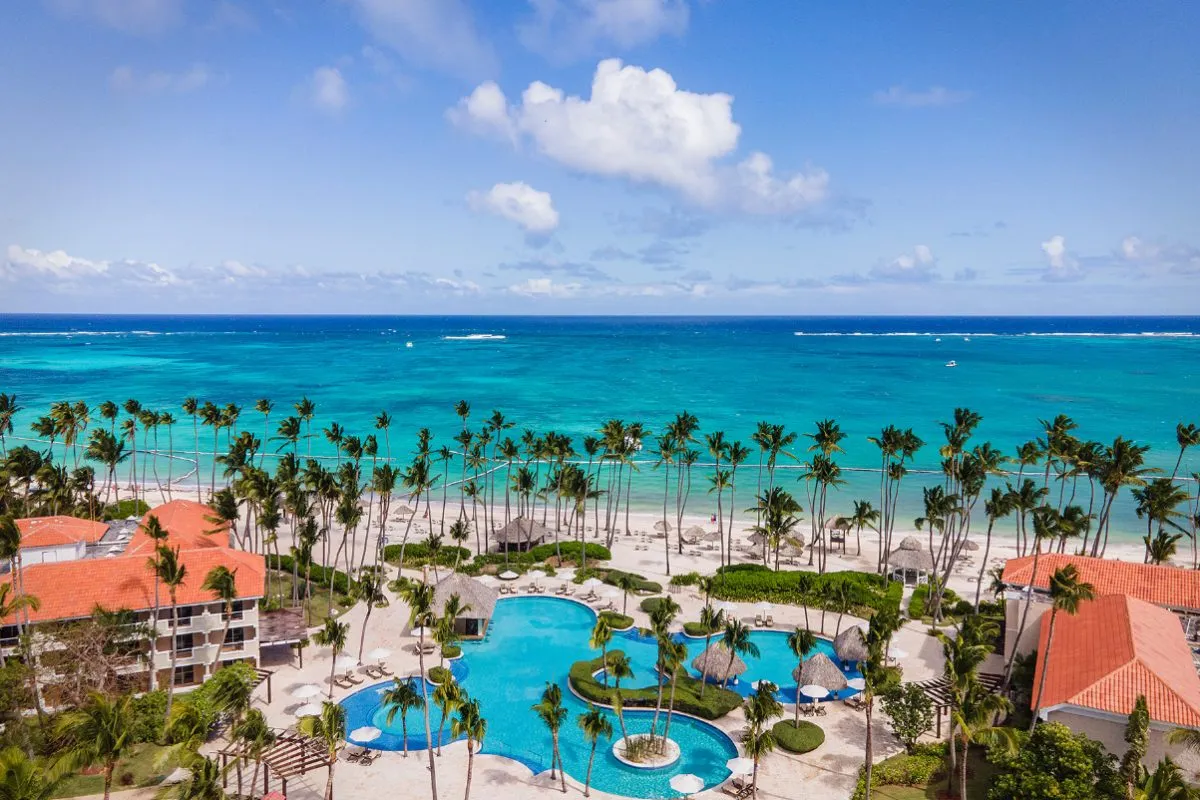Tourism For Good: How Chiang Mai Is Showing the Way
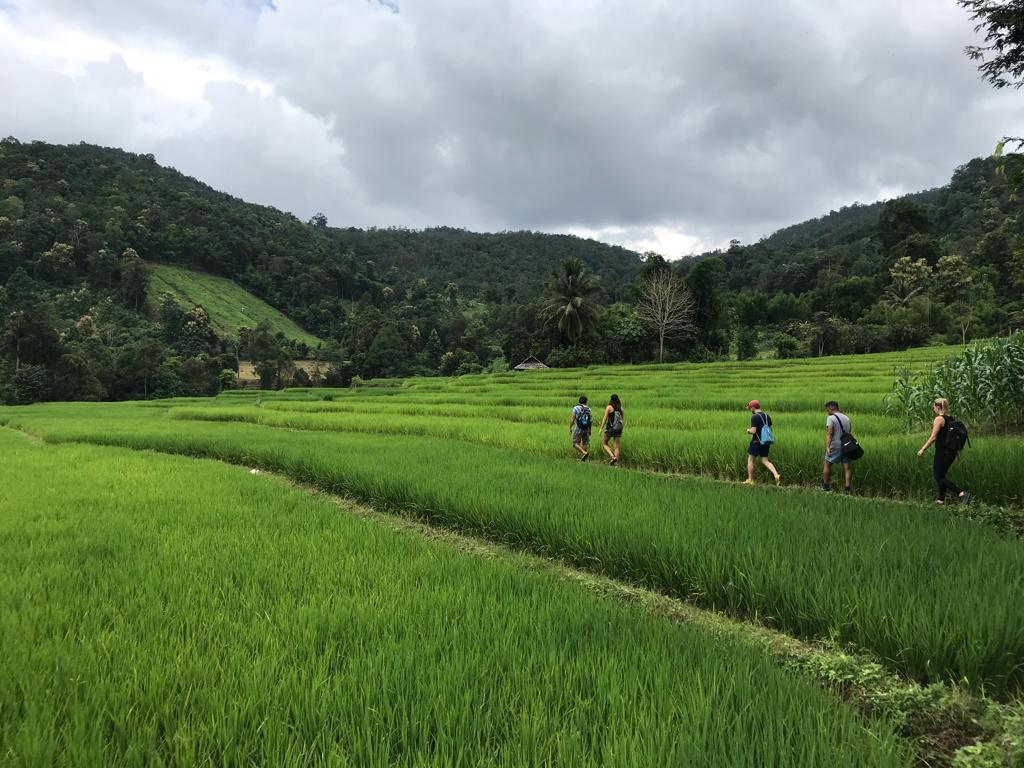
Skift Take
I showed up in Chiang Mai, located in the northern part of Thailand, a woman on a mission. I was on a quest to find the good in tourism.
You see, I met with locals in Lisbon and heard how tourism has influenced their city’s housing prices and resulted in overly gentrified neighborhoods with hardly any sign of Portuguese culture. I learned in Sofia how the government and key organizations are essentially only getting in the way of themselves when it comes to allowing the city to develop into the beautiful, emerging destination that it is. I realized in Hanoi that many people are just hoping younger generations will take care of their city and set up responsible tourism in ways that they never could.
I recognize the tourism industry isn’t perfect. Thailand has had to close certain beaches such as Maya Bay on Ko Phi Phi Leh Island indefinitely and Koh Tachai periodically to tourists to let ecosystems recover from the negative impact that too many people touching the coral and littering is having on the environment. By the way, coral reefs can’t repair themselves overnight.
As a result, I wanted to learn how Thailand could use, and is using, tourism for the betterment of the nation. I wanted to hear the stories of how tourism initiatives have been implemented that center on creating more sustainable jobs for locals, helping to improve income levels and resulting in better overall livelihoods. I wanted to hear about how customs, traditions, and cultural identities are being preserved for future generations. I wanted to learn about animals I had never seen up close before and better understand how we, as tourists, can help conservation efforts and improve animal treatment. I wanted to hear about all the good that tourism can do.
And while I did, I tried my best, as an individual tourist, to not be a part of the problem, but to be a part of the solution. I tried to correctly say “hello” in Thai (“Sawadee Kha”) when I ordered khao soi, a noodle dish of veggies and meat smothered in a delicious, curry-like sauce. I drank as many Thai iced teas, a black tea drink, with spices like star anise, tamarind, and cardamom and sweetened with sugar or condensed milk, as I could while sitting quietly in Chiang Mai’s lovely cafes while getting work done. I gave it my all in a Muay Thai class where the guys taught my friends and I the appropriate movements as well as when to "duck." I dressed appropriately in temples in Chiang Mai, Chiang Rai, and Bangkok, admiring how beautiful and unique each of them were. I went to villages in the northern part of Thailand to hike, see beautiful waterfalls, and watch women weaving silk. I visited a Royal Project research center dedicated to locals’ growing fresh produce. I volunteered at an elephant sanctuary.
I did my best to learn about Thailand’s history and culture while contributing to the country’s economy. I tried to be a tourist who demonstrates how tourism can and should be used for good.
Putting Chiang Mai on the Map
For some context, Chiang Mai, located about 430 miles north of Thailand’s capital city, Bangkok, used to be the capital of a completely separate kingdom, Lanna, dating back to the 13th century. This landlocked kingdom fought off powers around it throughout its history, but was occupied by Burma before finally joining Siam (Thailand’s previous name) more than 200 years later. Given its connection to various other countries, the region has served as an important economic trade center throughout time.
Thaksin Shinawatra, who served as prime minister of Thailand from 2001 to 2006, is said to have helped propel Chiang Mai into the future, given he was born and raised there. While known for money laundering, tax evasion, and other corrupt activities that eventually led to his political demise, Shinawatra also implemented initiatives that led to expanding Chiang Mai’s airport, building new hotels, developing infrastructure such as better roads and highways, creating Chiang Mai’s Night Safari, all of which helped to double the wealth of this northern city over the course of five years.
While modern buildings have sprung up all over Chiang Mai (I was taken aback upon walking in the huge MAYA Lifestyle Shopping Center located in the trendy neighborhood of Nimman which doesn’t look all that different from Brooklyn, New York), venerable temples and the remains of ancient city walls and gates preserving the perfect outlined square of the original city still stand strong speaking to the beautiful history of Chiang Mai.
For all that it has been through, Chiang Mai has still preserved and retained its culture, language, customs, products, and goods that are all completely unique to the tribes of Northern Thailand.
How Thailand Got to Where it is Today
Thailand has surpassed many emerging Asian markets in terms of economic growth. The country has a GDP per capita of more than $6,000, while Indonesia’s is just about $4,000. While other countries are currently seeing stronger GDP growth on a percentage basis, Thailand’s economic growth continues to be strong. The country is forecasted to have GDP growth of 4.6 percent in 2018, which is the first time economic growth has exceeded 4 percent since 2012 and is an acceleration versus growth of 3.9 percent in 2017. Indonesia, Malaysia, the Philippines, Vietnam, and Cambodia are all expected to have economic growth either stay the same or decelerate in 2018 versus 2017.
Source: World Bank
Source: IMF, World Economic Outlook, October 2018
At the same time, Thailand remains one of the most widely visited nations in Asia. Bangkok ranked as the most visited city in 2017 for the third year in a row according to Mastercard’s Global Destination Cities Index. Phuket was 12th. Thailand, in total, collected $57 billion in international tourism receipts in 2017. The only countries to beat it were France ($61 billion), Spain ($68 billion), and the U.S. ($211 billion).
Source: Mastercard’s 2017 Global Destinations Cities Index
For all of its tremendous growth, not all of the growth has been evenly distributed, with the country facing a major wealth gap problem. In fact, according to Credit Suisse’s Global Wealth Databook 2017, Thailand has the highest wealth inequality in the world, with the richest one percent controlling 56.2 percent of the nation’s wealth. The country moved up from third place (after Russia and India) in 2016. The top 50 richest individuals are worth more than $162 billion, up 31 percent from $124 billion in 2017. For reference, in Japan, where the GDP per capita is almost eight times that of Thailand’s, the top 50 are worth $186 billion. That’s only 15 percent more than Thailand.
Source: Credit Suisse Global Wealth Databook 2017
I present here four cases where the people of Thailand are trying to use tourism for good. The first three projects help better distribute wealth and improve the lives of locals: The Chiang Mai Night Safari, the Royal Project Foundation, and the ‘Silpacheep’ arts project under the Foundation for the Promotion of Supplementary Occupations and Related Techniques (SUPPORT) of Her Majesty Queen Sirikit of Thailand. After that, I discuss a project dedicated to promoting healthy tourism that supports elephant conservation, Elephant Nature Park.
Four Projects Centered on Improving Tourism and the Livelihoods of Locals and Elephants
Right before she had to catch a flight back to Bangkok, I sat down for a cup of tea with Kobkarn Wattanavrangkul ("Ms. Kobkarn"), the previous minister of tourism and sports for Thailand from 2014 to 2017, at the Chiang Mai International Airport. She spoke quickly and passionately, trying to tell me all of the ways she and the country are working to improve the lives of local Thai people before she had to jet set.
“In the past, we thought about numbers of tourists,” she told me. “But we shouldn’t focus on the number of tourists. We should be thinking about income and how to [better] distribute wealth.”
CHIANG MAI NIGHT SAFARI PARTNERS WITH LOCAL FARMERS
The Chiang Mai Night Safari opened in 2006 as a way to offer new shows and attractions that would draw more visitors, increase repeat visitation, and “promote Thailand as a destination,” noted Chutaporn Chuayyeawya (‘Ms. Poy’), sales and marketing officer at Chiang Mai Night Safari. Though modeled after the Night Safari in Singapore, the project is larger, with two safari tram rides and multiple shows, trails, and activities.
The zoo offers a way for travelers to view and see nocturnal animals up close as well as learn about animal and environmental conservation. The project also works with local schools and institutions to promote youth education.
Because the Chiang Mai Night Safari is a part government, part privately run organization, there are “less rules and regulations over budget-making decisions,” noted Ms. Kobkarn, which allows for greater flexibility.
As a result, the Night Safari partners with local farms to source food for animals at the project rather than having to procure food from the cheapest available source. In return, the animals’ manure is given back to the farmers to use as fertilizer, creating a circular reference that’s mutually beneficial for all parties.
“In the northern part of Thailand, there is less industry. The majority of income is from agricultural industries,” Ms. Kobkarn said. Partnerships like this one allow locals to “maintain their incomes,” not to mention helps the animals at the Night Safari.
I sat semi-uncomfortably through two shows at the Chiang Mai Night Safari, the Night Predator Show and the Tiger Show. I’m not in love with watching animals do tricks. Watching a tiger jump in the air to grab a piece of meat from behind a glass wall may be thrilling to watch, but I’d sleep better knowing more tigers were out living in the wild.
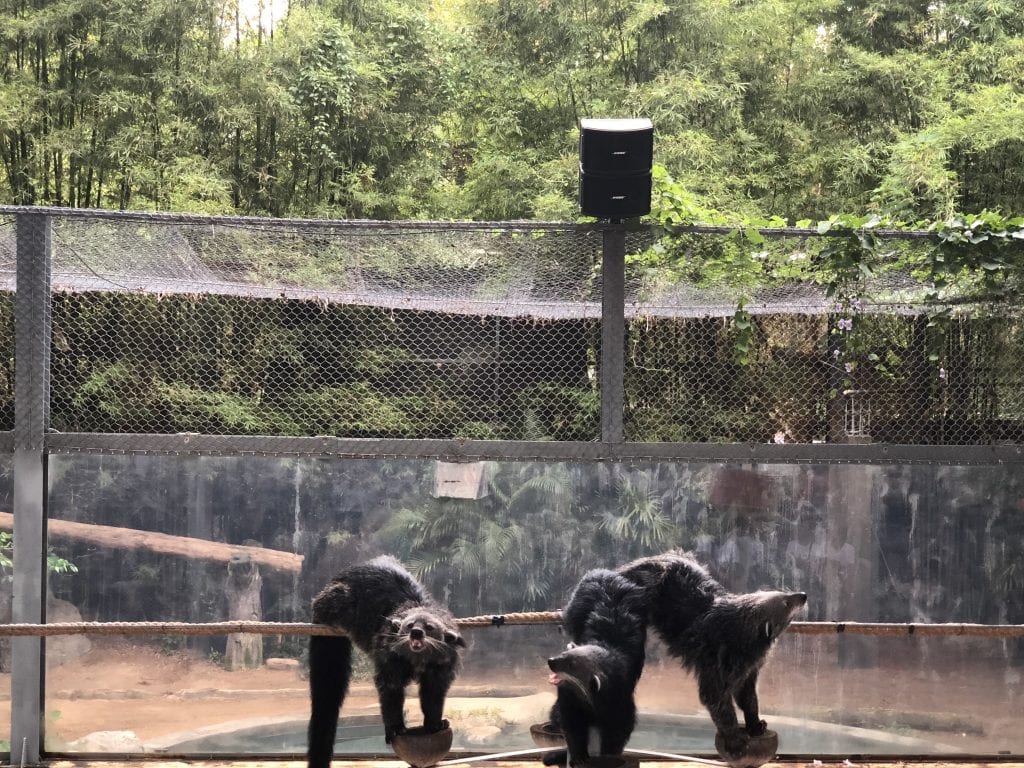
Bearcats, native to Southeast Asia, were part of the Night Predator Show at Chiang Mai Night Safari.
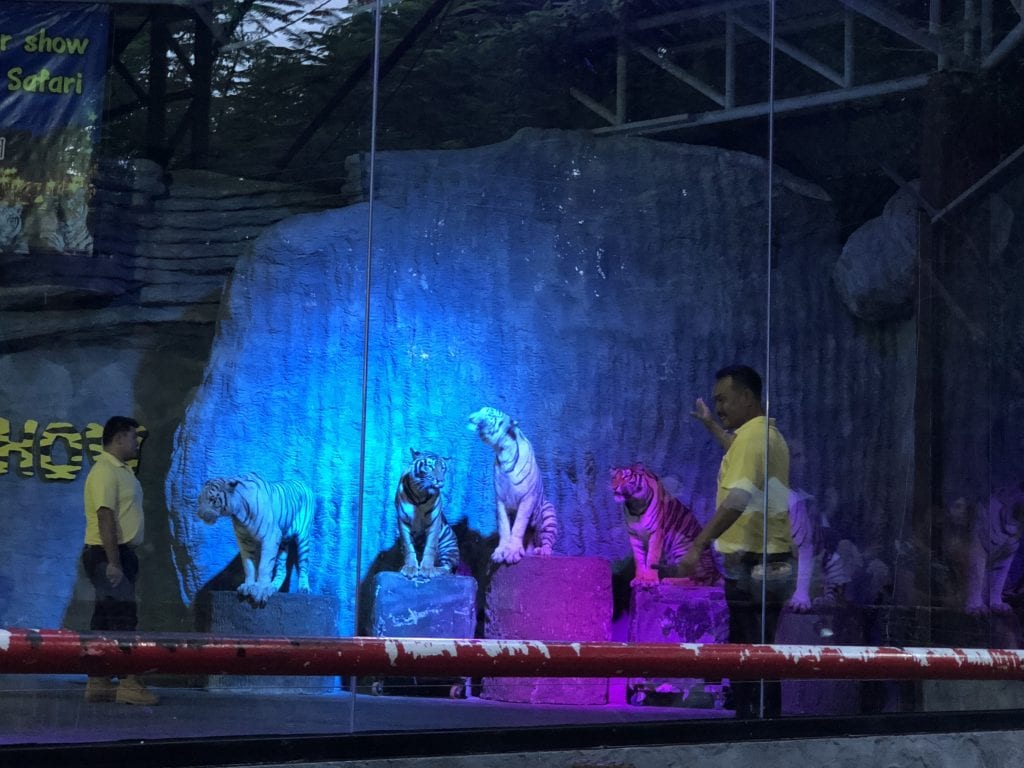
Tigers performed several standing and jumping tricks during the Tiger Show at Chiang Mai Night Safari.
Instead, I turned my attention to the completely packed audience, overflowing with visitors primarily from China (the attraction’s main visitor). Families held children, whose eyes were so wide with wonder and excitement. They had never seen a tiger up close like this before.
I’ve seen tigers before. I’ve been to zoos before. I also recognize there is a quickly growing global middle-class craving to travel more, to see more, and learn more about animals. There is massive untapped demand for these types of attractions. People want to learn (safely). They want to better understand.
I decided the animals seemed to be well-loved and respected. They looked healthier than some of the animals I saw in the wild during a safari in South Africa. I listened to Ms. Poy as she chatted with me about how she had worked in various roles throughout the Night Safari, working her way up to sales and marketing officer.
I thought about how incredible it is that the benefits of tourism demand can be funneled into the hands of locals through appropriate attractions and partnerships that help support and maintain the livelihoods of families who live in the region.
Royal Project Helps Develop the Agricultural Industry of Thailand
The Royal Project Foundation was launched in 1969 by His Majesty King Bhumibol Adulyadej of Thailand to improve the lives and incomes of Thailand’s hill-tribe people.
Many of these people were engaged in the opium-growing business, employing scorched earth techniques and moving regularly to new areas. It is said that the hill tribes were producing more than 200 tons of opium per year by 1970.
The goals of the foundation were many: Stop the spread of the opium business, stop the destruction of the land, decrease poverty, and establish sustainable farms whereby locals could maintain and grow better livelihoods.
Today, there are more than 4,000 Royal Projects that focus on agriculture, education, and research. “30 to 40 years ago, there were virtually no strawberries being produced in Thailand,” Ms. Kobkarn noted. “Now, there are strawberries, peaches, apples, and more. There’s an abundance of crops” that help support the families of the Karen, Hmong, Akha, and Lisu tribes who live in those regions.
“Now the hill tribes stay,” rather than having to move around. Ms. Kobkarn highlighted, “They have incomes.” These people are able to have better livelihoods.
The Royal Projects also helped to create a natural country border, improving national security via the natural fences of the farms and research centers.
The produce goes to a wide variety of organizations and people, notably the Chiang Mai International Airport which features shops and foods sourced from the Royal Project farms. The funds go directly into the hands of locals, helping to improve their overall lives and form better and stronger communities.
What’s more, the Royal Projects have created additional, beautiful, not-to-miss destinations in Thailand. I was able to visit the Royal Project Research Station in Doi Inthanon National Park. I sipped mango smoothies with friends while we learned about the center and walked around the gorgeous gardens. Many people come to stay in resorts at the Royal Projects as a result of the beauty, amazing food, and ability to relax and recharge.

The Royal Project Research Station in Doi Inthanon National Park is dedicated to growing fresh produce and improving the livelihoods of locals.
The Silpacheep Arts Project Allows Locals to Generate Income While Preserving Customs
Her Majesty Queen Sirikit of Thailand’s ‘Silpacheep’ arts project under the Foundation for the Promotion of Supplementary Occupations and Related Techniques (SUPPORT) of Her Majesty Queen Sirikit of Thailand was set up in 1976 to provide yet another way for locals to generate better, sustainable incomes while also preserving traditional techniques and customs of the Thai people.
In the northeast of Thailand, women engage in the practice of weaving “Mudmee” silk. The process is done by hand using naturally dyed silk and is fascinating to watch. The fabric, so loved by Her Majesty, has come to be known as “Queen of Thai Silk.”
Ms. Kobkarn encourages travelers to go “see where they make the textiles, … because it is really beautiful.” Certain stores in Chiang Mai sell the silk, but going to meet with the weavers is an incredible experience in and of itself.
The project provides these people of northern Thailand a way to generate income from their own homes and preserve their customs for future generations.
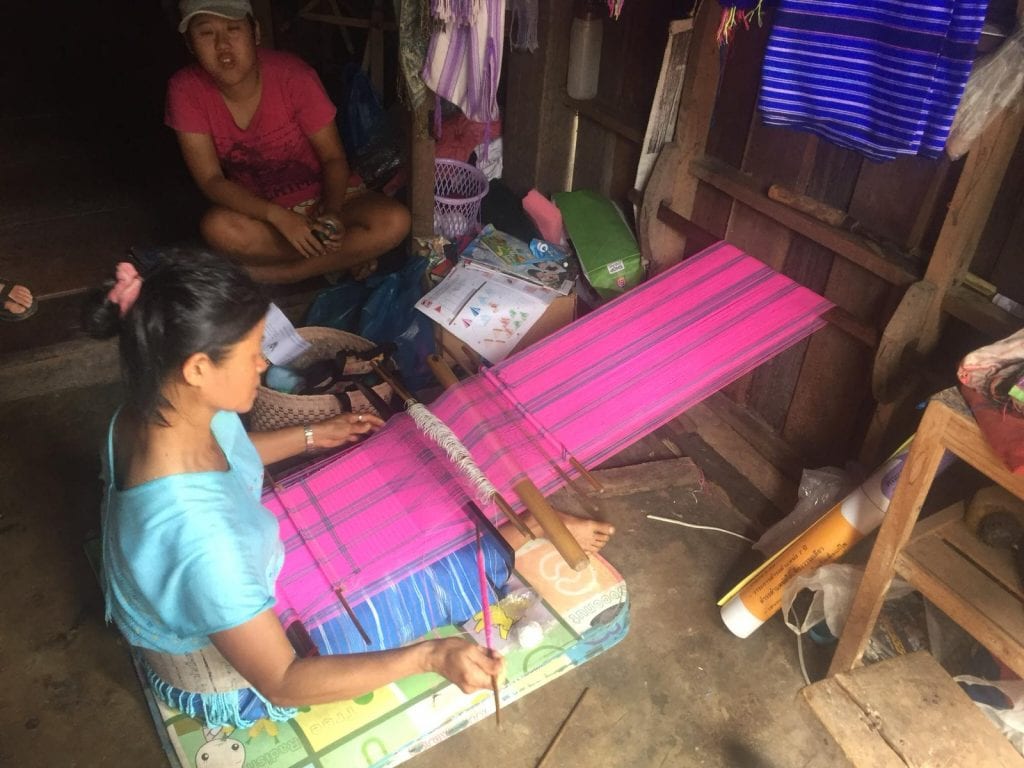
A woman belonging to the white Karen hill tribe of northern Thailand weaves silk according to tradition. Photographer: Stephanie Jones
Elephant Nature Park Focuses on Education and Rescuing Elephants from Poor Conditions
Elephant Nature Park is a sanctuary and rescue center for elephants located in the Mae Taeng District some 40 miles north of Chiang Mai city. Co-Founder Sangduen "Ms. Lek" Chailert (who also founded the Save Elephant Foundation) sought to establish a place where visitors could ethically interact with these beautiful, intelligent animals, but also to provide a home to rescued elephants where they could live peacefully and without mistreatment.

Mother and baby elephant walk on a short hike to a nearby watering hole at Elephant Nature Park. Photographer: David April
A key item on many travelers’ bucket lists is heading to Thailand to ride elephants and interact with these beautiful, intelligent animals. What is hidden beneath the surface of many of the places that allow the riding of elephants and force the animals to do shows and perform tricks is the harsh reality of how tourism has irreparably and negatively impacted the animals.
After the banning of the logging industry in 1989, elephant tourism became the only alternative for legal commercial use for elephants which corresponded with a boom in tourism. Being a mahout, or caretaker of elephants, was once considered an honorable or prestigious role, but is now often filled by disadvantaged, low income individuals in search of income. By capturing an elephant from the wild, elephant owners could give the travelers what they wanted: the chance to ride an elephant.
A late 2014 to 2016 study done by the World Animal Protection found that of the 2,923 elephants surveyed in 220 venues in Thailand, Laos, Cambodia, Nepal, Sri Lanka, and India, three out of four are living in “poor and unacceptable conditions.” Of those living in poor and unacceptable conditions, all were kept in venues offering elephant rides. Thailand is home to about three-quarters of all entertainment elephants assessed in the study, which also found that 357 more elephants in Thailand were found living in poor welfare conditions than five years ago.
Elephants are still killed for their tusks, meat, and skin, but when it comes to staying alive for the purposes of tourism, sometimes their conditions aren’t any better. Having to carry tourists on their bony, curve-spined backs all day, every day can lead to significant spinal injuries in elephants. The animals are often kept on short chains or in cages. Babies are taken from their mothers to be forcibly trained to entertain tourists.
“How can we allow our children, the next generation, to believe this is the right way [to treat animals]?” Ms. Lek asked me rhetorically.
And the numbers of elephants are declining too dramatically. Asian elephants previously numbered around 100,000 at the turn of the 20th century, but now estimations are in the 30,000 range, a more than 50 percent decline. Researchers estimate there to be around 3,000 to 4,000 Asian elephants in Thailand, around 20 percent of which live in Northern Thailand.
At Elephant Nature Park, one exhales a sigh of relief upon arrival that can only be found in the peacefulness of nature. The animals roam freely, are not allowed to be ridden, and do not perform tricks. They are simply allowed to exist and be themselves.
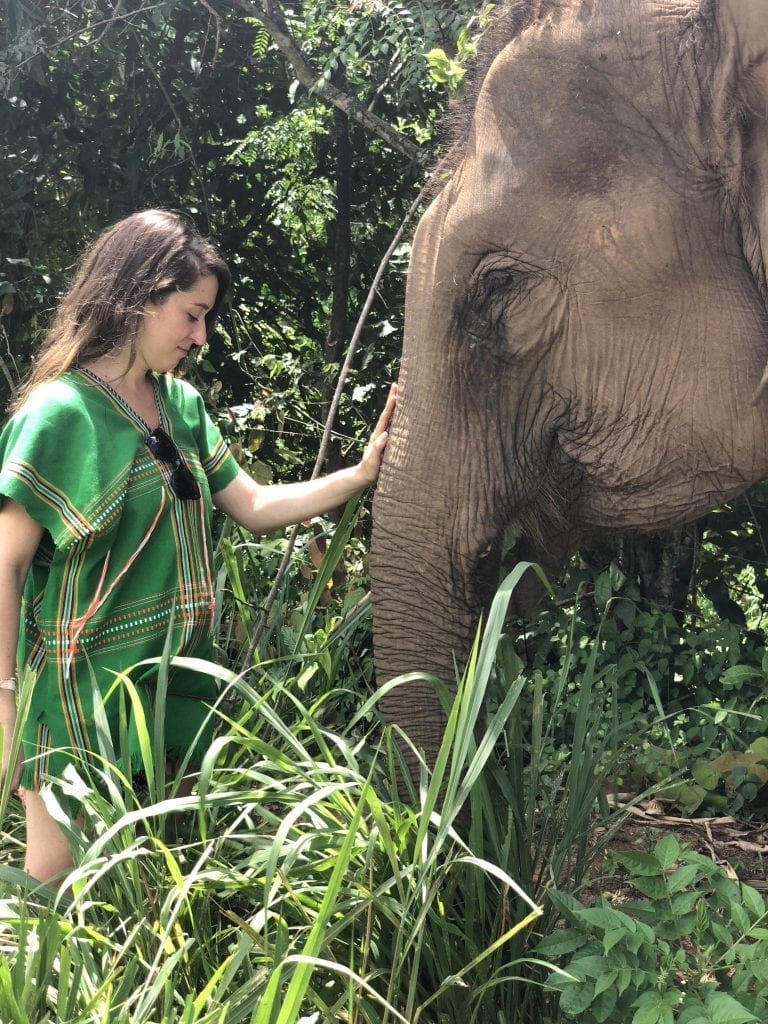
Getting to know these beautiful animals at Elephant Nature Park was an incredible experience. Photographer: Kaila Lawrence
We spent the day volunteering at the park, preparing and feeding the elephants snacks of banana, sugarcane, and rice balls with tamarind. We then went for a short hike with the elephants down to a watering hole where we played with the animals, splashing them with buckets of water while they splashed us. Two of the younger elephants playfully wrestled in the water while we watched in awe. The mothers interacted with their babies and nuzzled us as we got to touch their tough, leathery skin. It was single handedly one of the most magical days I have ever experienced.
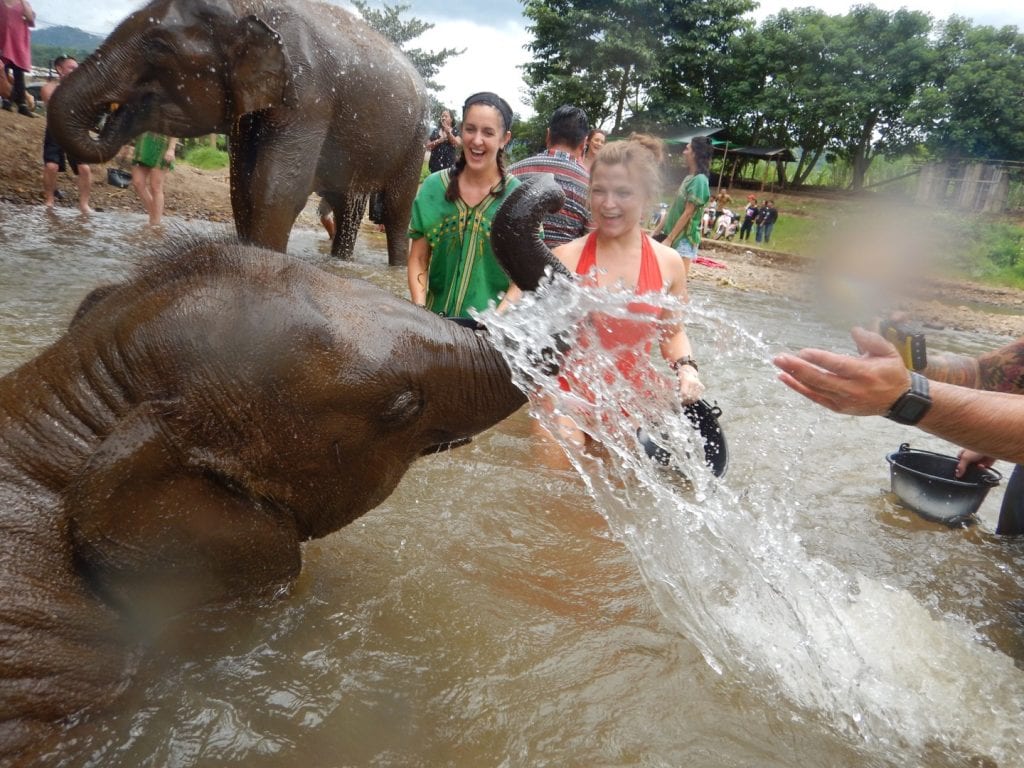
At Elephant Nature Park, the elephants are able to roam free and be themselves. Photographer: Desiree Anne Holder
Ms. Lek has helped rescue more than 200 elephants from the logging and tourism industry where they were being ridden and forced to perform since the 1990s. Her mission of providing a safe home for elephants doesn’t stop there: “The problem is sometimes money talks louder than kindness … we need education.”
Her desire to promote better animal rights and treatment led to the Asian Elephant Projects which helps small, independent elephant tourism operators gain access to knowledge and resources such as reservation management, marketing, veterinary care, and more in exchange for their adherence to a set of principles to ensure ethical and sustainable practices in the treatment of elephants. “We have to work with many elephant camps to convince them to change their ideas on elephant riding … [and to treat them] in a more humane way,” Ms. Lek stated. “[If] we work with the local community, [if] we work together, we can start to make a stronger environment for the animals in our country."
Some have argued that people should stop going to elephant sanctuaries all together. Intrepid Travel co-founder Geoff Manchester conducted research that suggested only six out of 114 locations treated the animals properly. When I asked another traveler in Chiang Mai if he had plans to visit elephants during his stay in Thailand, he told me, “I’m not going to any of them. I don’t think any of them are actually ethical.”
However, travelers doing nothing to demonstrate their disapproval of unethical practices is not the solution. Funds should be used to sponsor the right projects where more elephants can be protected and treated properly while also providing better incomes to low-wage earners who work at such projects. They can then obtain better access to resources and education on elephant conservation.
Doing Nothing Isn’t An Option; Use Tourism For Good
I left Chiang Mai completely in awe of the activities going on and the incredibly inspiring women with whom I had the opportunity to meet and see how they are dedicating each and every day to improving tourism and the lives of locals and animals in Thailand, particularly in Chiang Mai and northern Thailand.
Bangkok’s visitation is almost eight times that of Chiang Mai’s, implying that Chiang Mai still has a lot more room for growth in visitation. Just imagine what that means for Royal Projects, hill-tribe villages, and elephant conservation centers all north of Chiang Mai.
Source: Euromonitor International Top 100 City Destinations Ranking
The goal for tourism in this region should be to promote all that Northern Thailand has to offer and implement initiatives that encourage longer lengths of stay and increased spend per day. Not only is this more sustainable and better for the economy, it also results in less wear and tear on destinations.
Tourism is not perfect, but neither are you. What you can do is do your research and support the tourism attractions that are trying to do good.
But not going, or doing nothing, shouldn’t be an option. Go see the hill-tribe villages. Go see the farms. Go see the silk weaving. Go volunteer at an elephant conservation center. Stay longer, spend more, understand better.
I reached out to Thailand's former Minister of Tourism and Sports Ms. Kobkarn after our meeting at the airport to thank her for her time and for what she is doing for tourism in Thailand. She responded, “I just have to do my part for you to see and understand what ‘Amazing Thainess’ is all about. People to people. Heart to heart. We are not perfect. … But most important, do return to discover Thainess in many other parts of Thailand. You will find friends all around.”
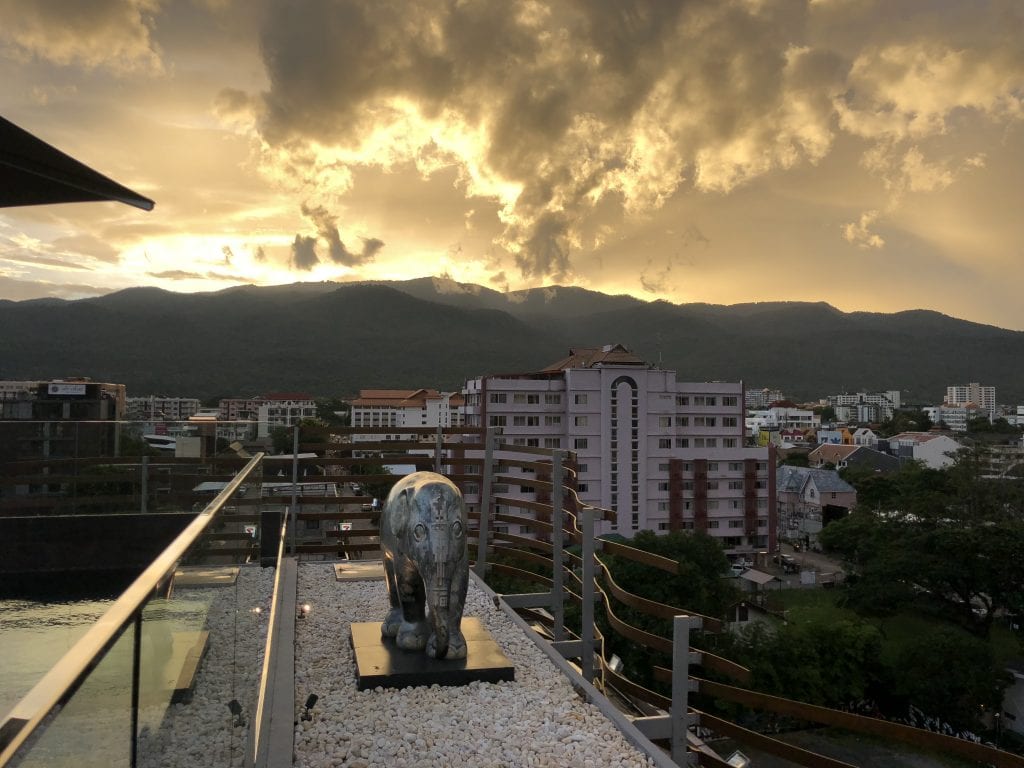
The beauty of Northern Thailand is palpable, and the opportunity for growth in tourism that helps the country improve economically is significant.
Skift’s in-depth reporting on climate issues is made possible through the financial support of Intrepid Travel. This backing allows Skift to bring you high-quality journalism on one of the most important topics facing our planet today. Intrepid is not involved in any decisions made by Skift’s editorial team.
